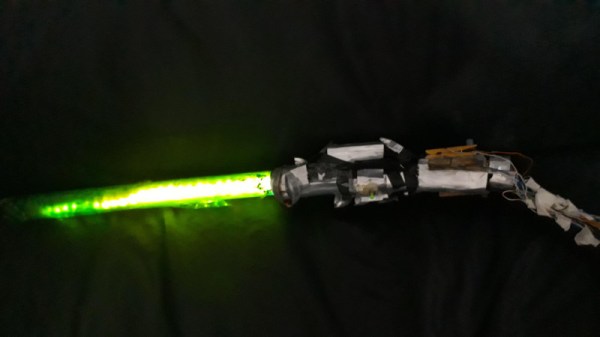Most computer and console games have a variety of different control schemes depending on the controller peripheral the player has to hand. For Star Wars games the fight scenes may be playable with a gamepad, but perhaps that leaves a little to desired in the realism department. In that case, [Leonardo Moreno] has the solution, in the form of a motion sensing light sabre for gaming via gesture control.
The first part of any light sabre project is the sabre itself, and for this he uses soft transparent PVC tubing. This might seem an insubstantial choice, but makes sense when the possibility of hitting an expensive television or gamers monitor with it is considered. Up the pipe goes a piece of LED strip, and onto it a hilt containing an Arduino and an MPU6050 gyroscope sensor. The physical controls come courtesy of a small analogue joystick and a trigger fashioned from a wooden clothes pin. The result may be a little rough and ready, but it’s undeniably a light sabre. Full instructions and software can be found at the link.
Light sabres have been a perennial build, but few have captured the original better than this laser based one.














